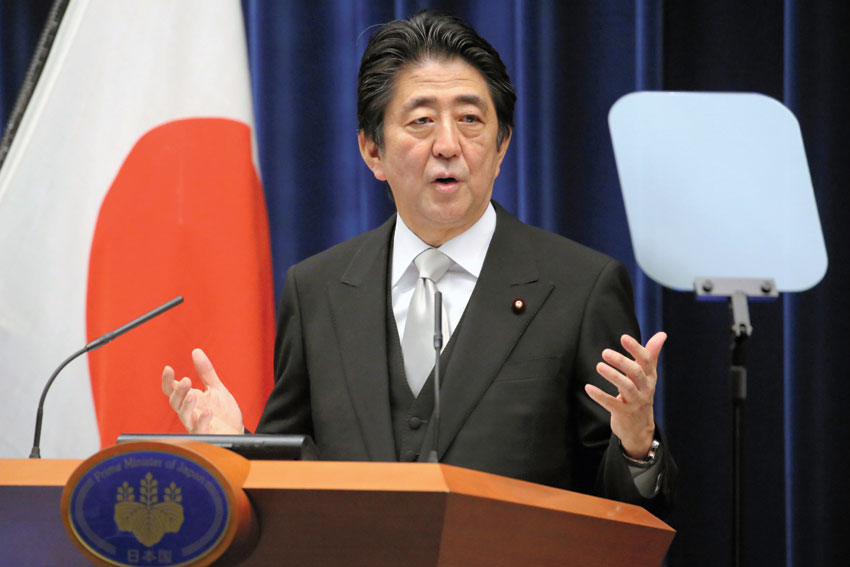The Japanese Prime Minister’s much heralded and debated economic paradigm Abenomics has provided Japan with solid ground to reorient itself for a more globalized world. Now its final implementation is underway

Prime Minister Shinzo Abe’s economic plan that helped get him elected in 2012 is designed to flush Japan out of two decades of deflation. Dubbed “Abenomics”, the three-pronged plan or “arrows” involves increased government spending, bold monetary stimulus, and structural reforms to lift the long-term growth rate.
Japanese companies are also reorienting themselves for a more globalized world. “Six years ago, we focused on the domestic front. There’s a lot of dynamism and innovation in Japan. We want to bring that to the global market,” says Irene Hirano Inouye, President of the U.S.-Japan Council.
Abenomics’ first arrow was an assault on the currency. The Bank of Japan launched a huge bond-buying program and increased government spending to the tune of $100 billion, adding to the country’s already massive debt load, but the moves helped to rally markets and send the yen plummeting against the dollar making Japanese exports cheaper and more attractive.
Recent data suggests that spending levels of consumers and corporations remains sluggish, which is impacting growth, but the Prime Minister remains optimistic.
“Tomorrow will definitely be better than today,” Mr. Abe recently stated on Japanese television. “Abenomics is definitely entering a new stage. Japan will become a society in which all can participate actively.”
The economy is showing signs of improvement. Unemployment is at 3.3%, down slightly from last year’s rate of 3.7%. Unlike in the U.S. where lower unemployment rates are due to workers dropping out, participation rates are higher in Japan, particularly among women and the elderly, two demographics that the prime minister has specifically targeted to join the workforce. Worker wages are also up for the first time in nearly two decades, thanks to pressure from Mr. Abe to pass along corporate profits.
The third prong in Abenomics is focused on a growth strategy, which consists of systemic reforms to the economy. “The private sector companies must be the main actors in implementing the third arrow, which involves a proactive management style,” says Kunio Ishihara, Chairman of the Japan-U.S. Business Council.
While critics suggest that Abenomics has been short of results, the private industry is enthusiastically backing the plan. “We believe this economic stimulus program is definitely our biggest opportunity to move forward,” says Madoka Kitamura, President of TOTO, Japan’s leading toilet manufacturer, which has pledged to take innovation and design to the next level.
IT giant NEC echoes the sentiment. “Japan is changing because of Abenomics,” says Chairman, Kaoru Yano. “The government clearly understands the need for drastic reform of the regulatory environment as part of the solution.”
In September three new “arrows” of Abenomics were unveiled: strong economy, support for families and social security. With six bows now in his quiver, the prime minister aims to increase the size of Japan’s economy to JPY 600 trillion ($5 trillion), from around JPY 490 trillion over the coming years – a tall order, but one Mr. Abe is confident he can achieve.
0 COMMENTS